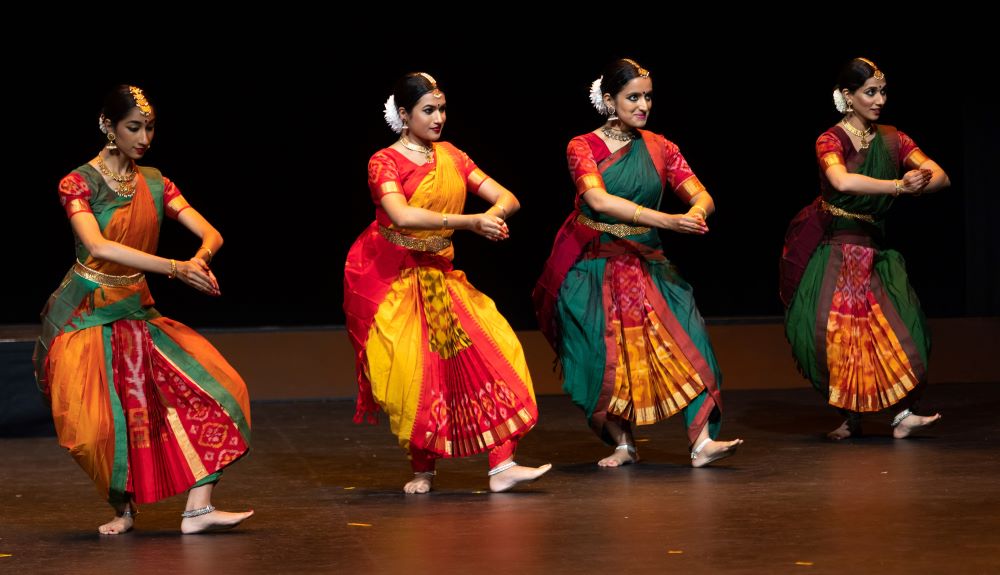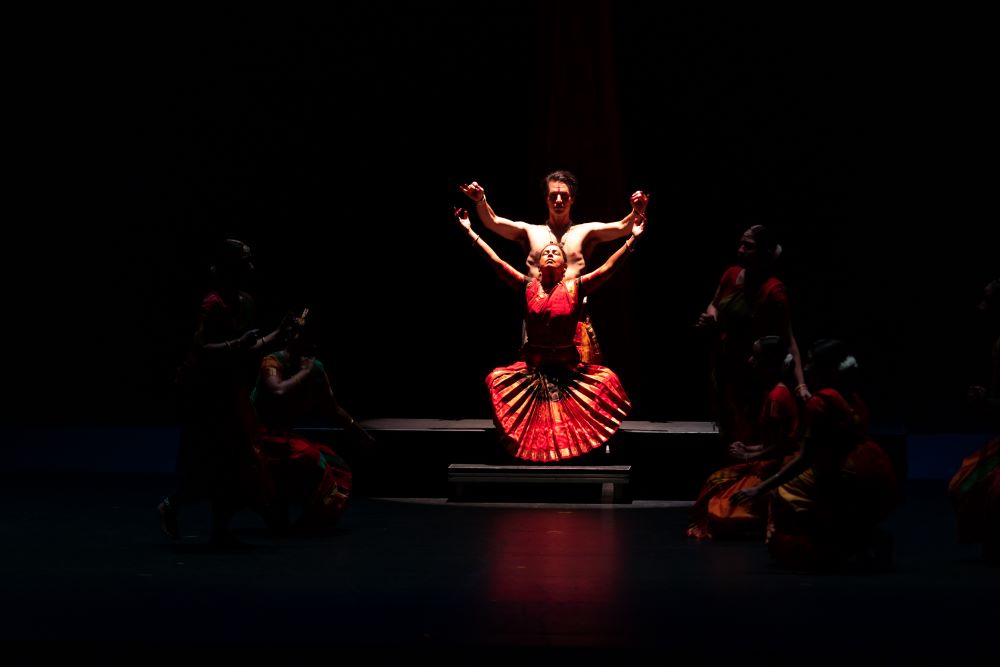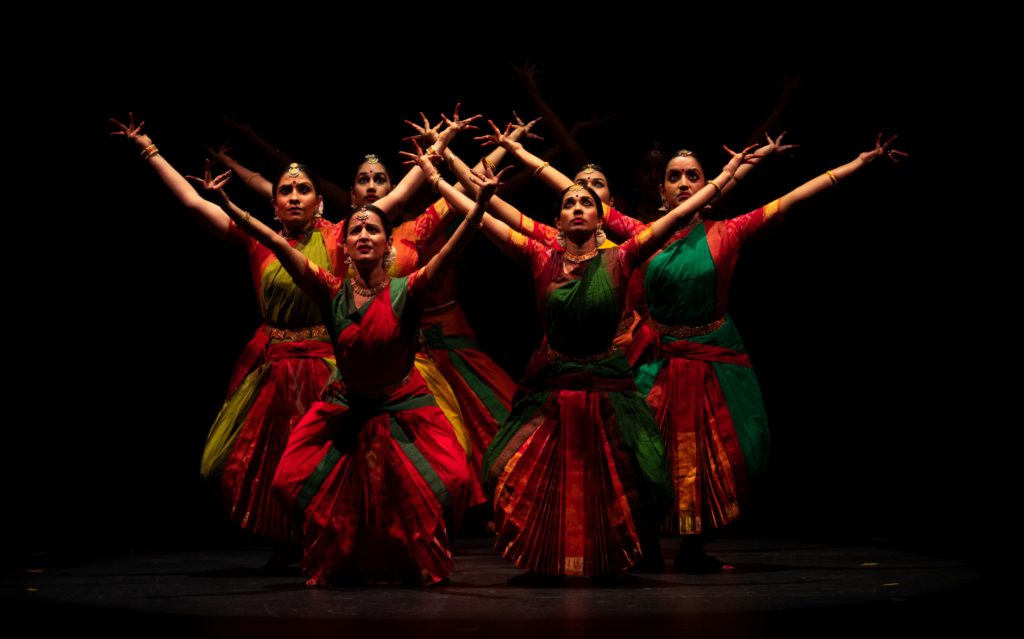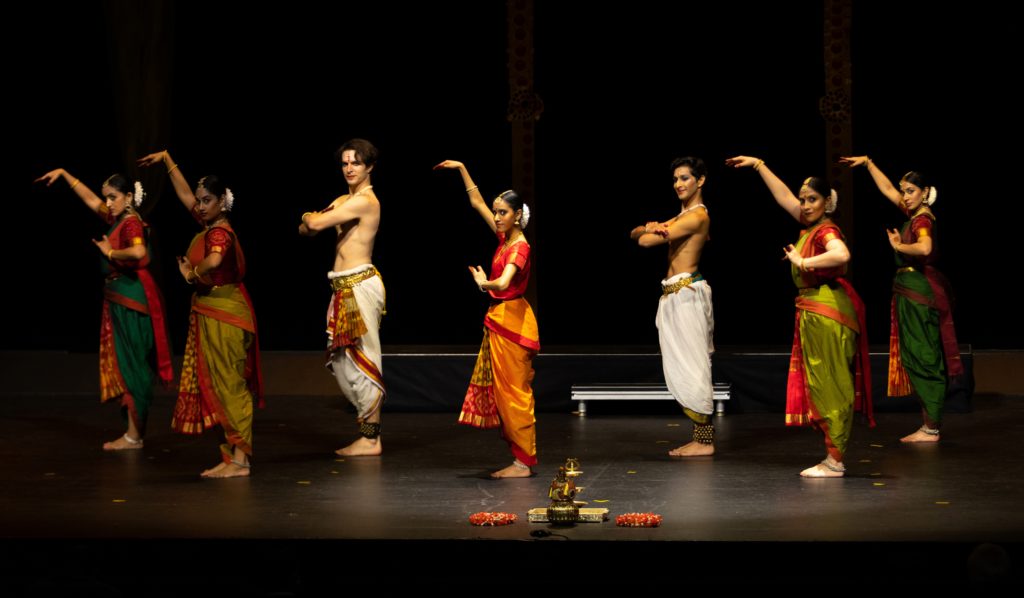Staging a timeless story – ‘Kannagi enbathen peyare’

An adaptation of Sillapathikaram- The Jeweled Anklet.
By Sudha Kumar
On 26 March 2022, at Riverside Theatres, Sydney, Hamsa Venkat’s Samskriti school of Dance and Sumathy Ramesh of Lzerobzero presented a Bharatanatyam margam called ‘Kannagi enbathen peyare’, an adaptation ‘Sillapathikaram’ (Tamil for “The Jeweled Anklet”).
Sillapathikaram is the earliest epic poem in Tamil, written in the 5th–6th century AD by Prince Ilanko Adigal.
The idea was conceived by Sumathy Ramesh, a medical device product development professional and a lover of the arts. (Lzerobzero – https://www.lzerobzero.com)
For a universal approach to a project, one couldn’t go further than the United Nations Organisation. The Sustainable Development Goals (SDGs), were adopted by the United Nations in 2015 as a universal call of action to end poverty, protect the planet, and ensure that by 2030 all people enjoy peace and prosperity.

Sumathy chose one of the 17 sustainable goals of the United Nations – ‘Peace Justice and Strong Institutions’ as an inspiration for expressing the margam. Sumathy’s perspective is that ‘justice can thrive only when there is acknowledgement that an injustice has occurred. Strong institutions, if appropriately regulated, have the power to enable sustainable justice through acknowledgement of injustices’. Injustices occur at all levels in the hierarchy of humankind, but when an injustice occurs to your loved one, love manifests as courage.
This being her inspiration, and because of her absolute belief that human emotions are best conveyed through poetry ‘Kannagi enbathen payare’ was born. This was then set to a Bharatanatyam Margam by the excellent choreography of Hamsa Venkat of Samskriti School of Dance. As always, the dancers and musicians did not disappoint.
Initially the musical scores to Sumathy’s lyrics were vocalised by veterans of the Sydney Carnatic music circle. Sumathy chose the Varnam to be based on ‘Raagam Bhairavi’ because it was the portrayal of Kannagi’s ‘restrained anger’ with the message that ‘injustices need to be called out respectfully, and that it occurred due to incorrect assessment or inadequate understanding’.
The Margam was presented by a group of well-versed and seasoned dancers mostly from Hamsa Venkat’’s Samskriti School of Dance, Sowmya Sriram, Vidya Gokul, Priya Murali,Govind Pillai, Sneha Rao, Deepika Vyasnarayanan, Varsha Raghunandan, Abhaya Anilkumar, Lakshmi Aravamudhan and two guest dancers Vishakha Iyer (student of Chidambaram R Suresh and Sheejith Krishna ) and Raphael Speyer (of Natanalaya Dance academy). The music for the Margam was rendered by Krishna Ramarathinam (vocals), Chidambaram R Suresh (nattuvangam), Pallavan Nagendran (percussion – mridangam), Venkatesh Sritharan (flute) and Vishni Ravindran (Veena). Music was supported with vocal narration by Aishwarya Rao which enhanced the comprehension of the story.

The Margam constituted of the ‘Allarippu’(raagam Naatai), which presented an ‘almost Utopian’ Madurai, the ‘Jathiswaram’ (raagam Shankarabharanam) that allowed pure ‘nritta’ to morph into ‘nritya’ as the jathis (dance notes) were synonymous to literal question words (padagama? parigasama? ); the ‘Shabdam (raagam Thodi)’ that challenged the society of fair play (‘Ketparilaro’ – Is there anyone listening? Is there no one at all listening?); the Varnam (raagam Bahiravi), the main body of the margam, where Kannagi challenges the King and his people with her restrained anger and calls out the injustice meted out to her loved one with such extreme fortitude that it turns Madurai to ashes; the Padam (raagam Kamboji) that celebrated womanhood by bringing together Kannagi ‘the chaste wife’ and Madhavi ‘the other woman’ in one space to celebrate their power of endurance, like the metaphorical flame of a lamp that endures and is never snuffed out by a storm; culminating in the energetic Thillana (raagam Valachi) portraying a Madurai raging in the flames of injustice; and the Mangalam where Kannagi is sculpted to immortality.
The dancers who were chosen to portray each character were well thought out and didn’t miss the mark. The common thread that weaved through the tapestry of the margam was the persona of Kannagi played by Hamsa Venkat.
It was an aural, visual and intellectual treat.
For a story that was written sometime in 5-6 AD, every aspect expressed in the margam was timeless and relevant to this day- the love, the celebrations, the ‘other woman’, the enduring power of the feminine, the forgiveness and acceptance, the injustice, the courage and fortitude and the immortality of all of the above.
The poetry was completed in August 2020 and the musical scores for the Margam were finalised sometime in June 2021 after many hours of tireless work. Practice sessions for the dance started straight after.
The dancers under the tutelage of guru Hamsa Venkat mastered the intricate and complex ‘jathis’ that portrayed the emotion of each of the items in the Margam. Technical finesse was par excellence and was there for all to see. But it was so much more than that.
A stage performance of this scale is only the final product of numerous hours of sustained focus and perseverance. Being present at many practice sessions it was amazing to observe the process and the precision with which the musicians and dancers worked through the nuances of their physical and emotional expressions, hour after hour, evening after evening, for weeks, driven by their sheer passion for the art. And at some point in that space the dancers are not mere performers, but become one with the character. Rehearsals are as good as the final performance. Once they get under the skin of the character, emoting becomes natural.

The ten dancers along with guru Hamsa Venkat worked as an excellent team. They were seasoned senior dancers and not so experienced young ones, with the senior dancers on many occasions taking on leadership to guide, encourage and support the younger ones. And Covid being the gift that never stops giving, at various times the dancers were either infected or were close contacts, and that meant that there were individuals who were on remote practice. Govind Pillai, a Victorian resident, participated in almost all practice sessions remotely. None of the above however became an excuse for the dancers to put off or give up their practice.
The musicians, dancers and their guru are all professionals in various fields who carry the art form in their hearts and live parallel to regular life routines and expectations. With young families, full time careers, and logistical challenges of all sorts it is no mean feat to take on a project of this magnitude and deliver with aplomb.
When people move from one country into another, they also move from culture into another. They live two lives simultaneously. One at home or environs of their community and the other when not. They shift physically, mentally, socially and emotionally between the two with ease. But that seamless and effortless glide from one to the other and back is possible only when there is absolute clarity of one’s identity. Identity that comes from one’s heritage, ethnicity, and roots. And this does not happen overnight.
Literary adaptations like ‘Kannagi enbathen peyare’and creative hubs like Samskriti School of Dance do more than just stage a show or teach a classical dance form. It is a space where youngsters find themselves, their heritage. They are introduced to their identity, their ancestry.
The Bharatanatyam Margam ‘Kannagi enbathen payare’ will be remembered by so many for so many reasons.
Short URL: https://indiandownunder.com.au/?p=17733
